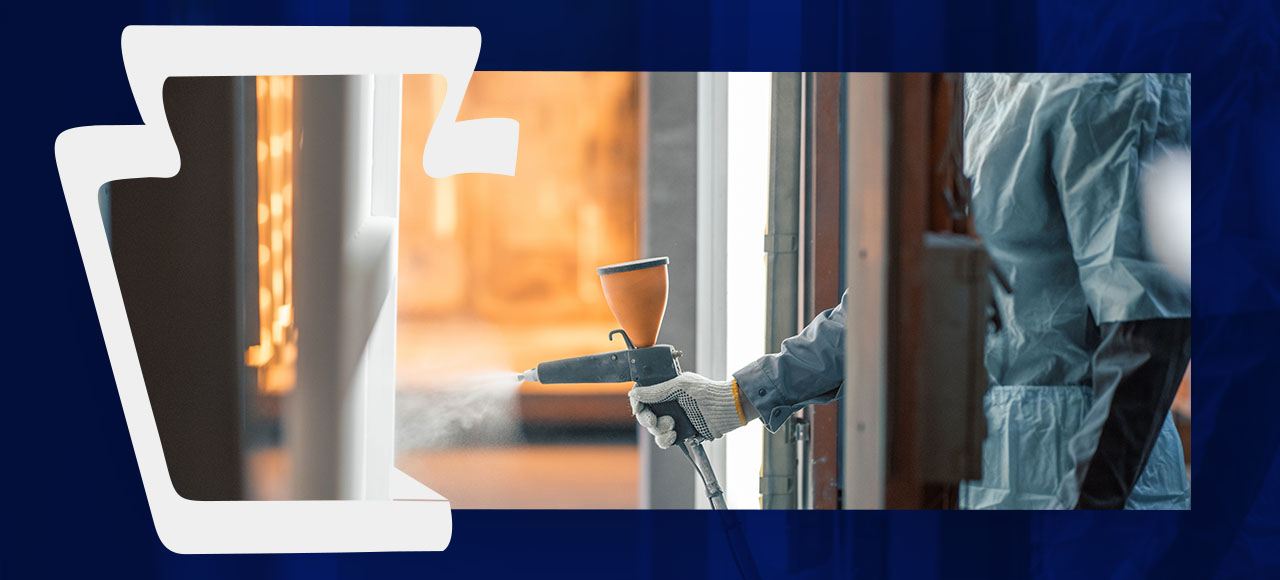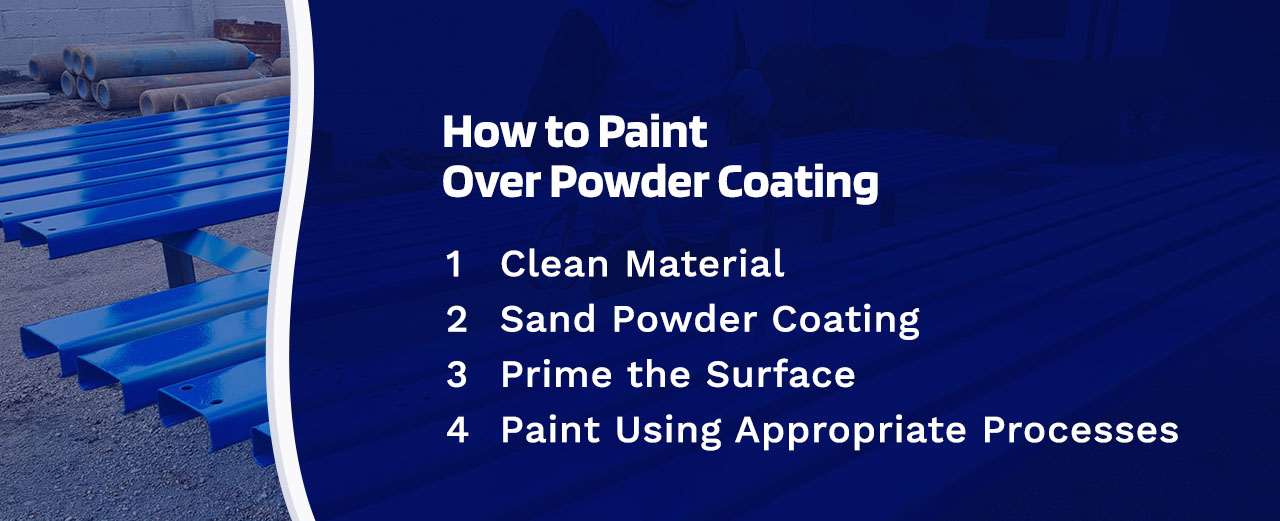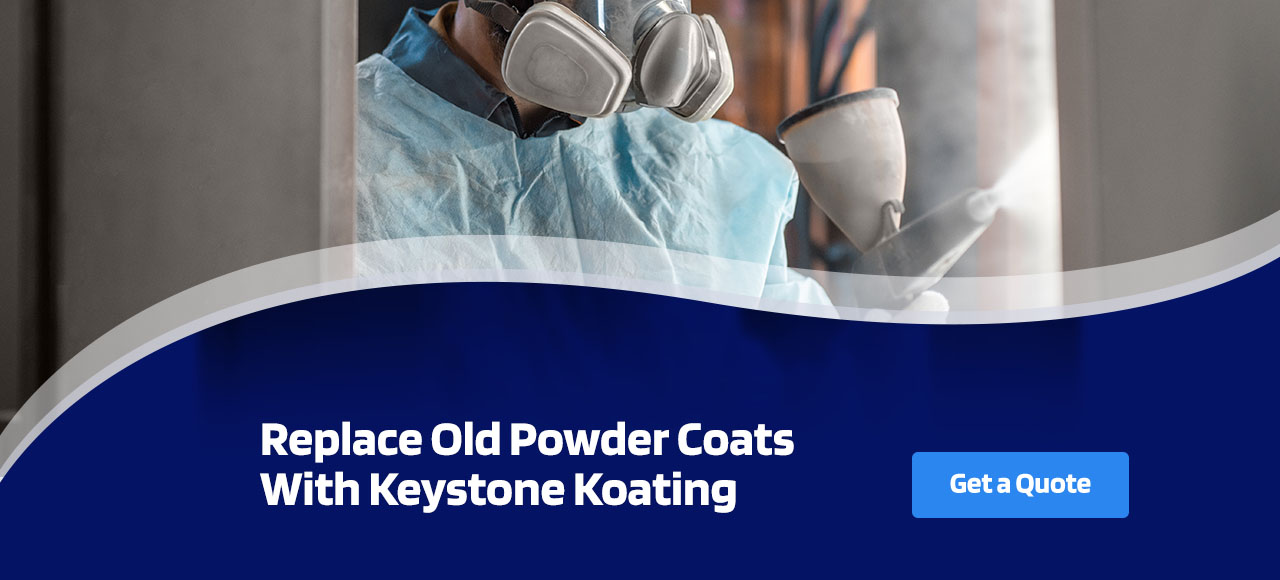
Powder coating and paint are robust protective surfaces businesses and individuals apply to products to keep them safe from the elements. Before using them together, you must understand how they collaborate for quality results and capabilities.
Can You Paint Over Powder Coating?
Yes, you can paint over powder coating. Many choose to paint over their powder-coated products as a simple way to change their appearance or maintain their quality. While powder coatings are incredibly durable and resistant to wear and damage, they can still receive scratches and other imperfections over time. You can use paint to seal scratches and chips, preserving your product’s life span and performance.
When choosing to paint over your powder coating, you must understand the various considerations and factors that determine its applicability, including:
- Paint quality: When you select a paint option, you want one that matches your powder coat for appearance and performance. You want to paint that will continue to provide the comprehensive protection powder coats offer, like rust, weather and scratch resistance. Additionally, powder coats have clean, quality and beautiful finishes.
- Powder coat condition: If you use paint to repair the powder coat, you should inspect it first to determine if painting is the proper method. Too much rust, chips or uneven coats can impact the paint’s capability to serve your products. When there’s too much rust, you might need to sand or sandblast it away. Uneven coats and abundant chipping might require complete coat removal instead of painting.
- Application method: Each project has unique specifications. Factors like your available facilities, material, size and shape determine how you apply paint to the product. Some standard methods include sprays, brushes and rollers.
Painting over powder coats offers numerous benefits but includes some considerations and caveats. If you have questions about the processes you should use, following your powder coat provider’s instructions or working with a coating expert can better ensure quality final products.
Should You Apply Powder Coating Over Paint?
Experts recommend only applying powder coatings directly on surfaces. A painted surface can interfere with the coating’s ability to bond to the surface, reducing its performance and capabilities. When you want the best results and continual care, you should use powder coats on clean, prepared surfaces.
Many powder coatings services include cleaning and paint or coat removal steps as part of their pretreatment processes, ensuring your materials receive the best care before applying powder coats.

How to Paint Over Powder Coating
Applying paint over powder coats requires taking the proper steps and precautions. When you follow the right process, you can better ensure the paint will bond to the powder coat and perform its best.
1. Clean Material
Before you can paint powder coatings, you must adequately prepare the surface. Paint needs the right conditions to adhere to surfaces, and the smooth, even finish provided by powder coatings can pose problems when approaching this process. You can increase your chances of the paint bonding by preparing the surface.
When cleaning, remove dirt, grease, debris and other substances from the surface. Depending on your product’s material and needs, you can use various cleaners for this application. When selecting cleaners, you can provide a deeper clean by buying one that functions as a degreaser.
To cleanse your powder coating, apply your cleaning solution with a soft-bristled brush or a power washer. When finished, let it air dry before approaching the next step.
2. Sand Powder Coating
Because paint has difficulty bonding to smooth powder coats, you must improve its adhering abilities by creating a rougher surface on the powder coating.
Sand the powder coat using light-grade sandpaper. You might have to return to this phase several times to reach the right level for your paint selection. Start slowly and lightly to help keep more of the powder coat intact.
When finished with the sanding process, you need to clear dust and debris from your product’s surface before you can start painting. For this step, use a solvent cleaner to remove unwanted substances from your powder coating.
3. Prime the Surface
Priming your surface can create a better bond between the material, powder coat and paint. You should choose a primer designed for your product’s material to ensure the best results and protection.
The priming stage can help you determine when the powder coat is rough enough from sanding. After sanding, apply a small portion of primer to part of the surface and let it sit. With a damp cloth, try wiping the primer away. If the primer comes off, you must return to the sanding stage. If it stays, you can apply the rest of the primer and paint.
4. Paint Using Appropriate Processes
After the primer sets, you can begin painting. When painting metals, epoxy-based and enamel paints stick well to surfaces. Talking with an expert can connect you with a suitable paint material for your application.
You have many options for applying paint to your product’s surface. Two common methods are spraying and using brushes:
- Spraying is quick and easy, making it ideal for people prioritizing efficiency with painting and repair processes, especially when working on large objects. However, this option requires ventilation in facilities. When applying paint as a spray, you should aim to use smooth movements and hold it at a distance, which will vary depending on your material and shape.
- Brushing might take longer to cover surfaces, but it often creates higher-quality appearances. This method is also ideal for facilities without good ventilation. Like using a spray, you should move brushes in smooth, horizontal movements for the best application. There are many types of brushes available, though synthetic brushes are a quality choice.
Regardless of your chosen method, you should apply paint in multiple thin layers over fewer thicker ones. Thin layers of paint improve its appearance and quality, preventing the paint from dripping, running and sagging as it sets and dries. The result is a quality finish.
Replace Old Powder Coats With Keystone Koating
When you want to avoid the hassle and involvement of repainting your powder-coated products, Keystone Koating provides quality powder-coating services for commercial and industrial applications. We can handle project scopes of any size, increasing efficiency when coating high volumes. Powder coating comes in almost every color, so you can achieve the exact hue you want for your products.
When you partner with us, we’re there with you every step of the way. Our pretreatment steps are comprehensive and include removing old paint coats for better care and adhesion. After, we test coated products to ensure they meet your standards and needs.
Contact us today to receive a quote and discover the benefits of replacing old powder coats with Keystone Koating.


